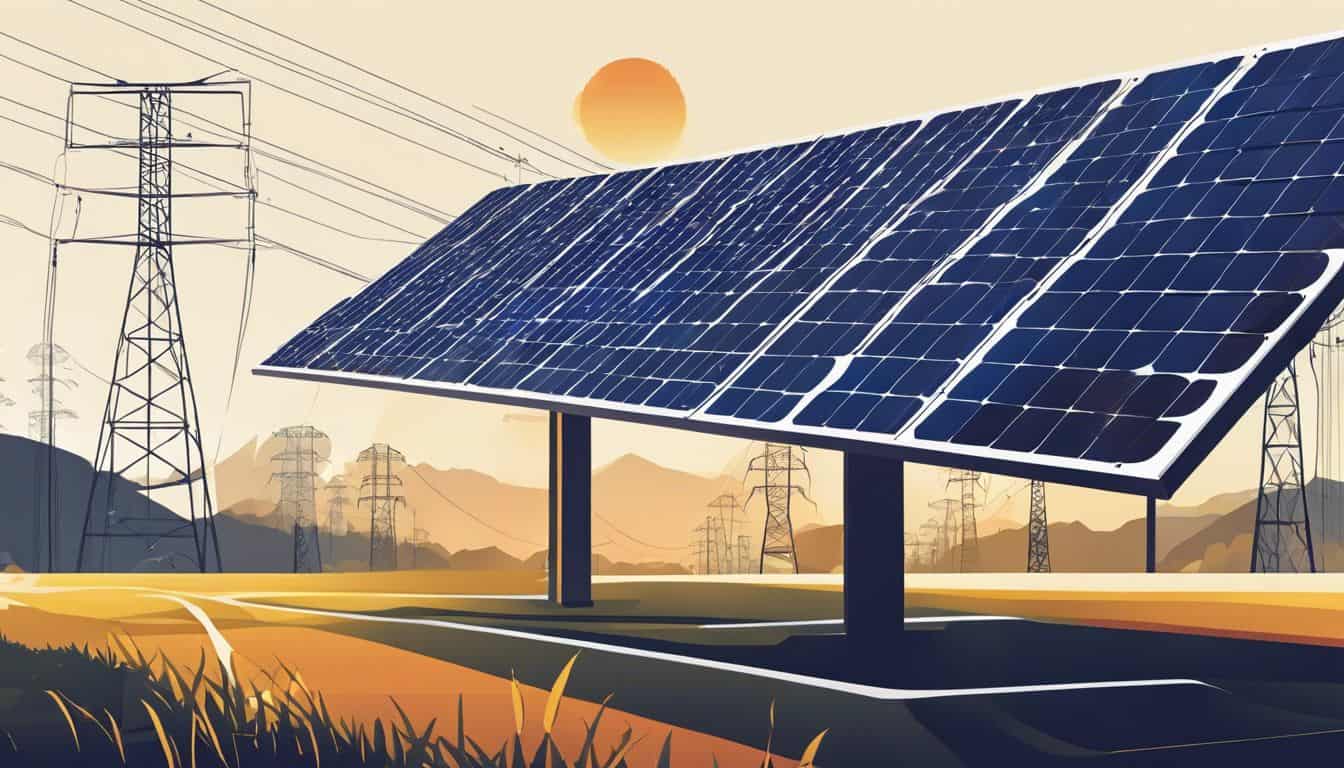Concentrated Solar Power (CSP) technology has emerged as a promising clean, renewable energy generation solution. However, CSP’s true potential lies in its ability to provide reliable, dispatchable power through innovative storage solutions. This article explores the various storage technologies revolutionizing CSP systems and their impact on the future of renewable energy.
Thermal Energy Storage Basics
At the heart of CSP storage solutions is thermal energy storage (TES). Unlike other renewable energy sources, CSP has the unique advantage of storing energy in the form of heat, which can be easily converted to electricity when needed. This capability addresses one of renewable energy’s main challenges: intermittency.
The principle behind TES in CSP is straightforward yet powerful. Excess heat generated during peak sunlight hours is stored in a medium, typically molten salts or specialized oils. This stored heat can then be used to generate electricity during cloudy periods or at night, ensuring a consistent power supply.
Types of Thermal Storage Systems for CSP
CSP plants employ various thermal storage systems, each with its distinct advantages:
- Sensible Heat Storage: This is the most common type, using the temperature change of a storage medium to store and release heat. It includes:
- Two-Tank Direct System: The heat transfer fluid is also the storage medium.
- Two-Tank Indirect System: Separate fluids for heat transfer and storage.
- Single-Tank Thermocline System: Uses a temperature gradient within a single tank.
- Latent Heat Storage: Here, phase change materials (PCMs) are used to store energy as they transition between solid and liquid states.
- Thermochemical Storage: This technology stores energy through reversible chemical reactions. It offers high energy density but is still in the research phase.
For a deeper dive into these technologies and other innovations, check out this guide to concentrated solar power innovations.
Operational Aspects of CSP Storage
The operation of CSP storage systems involves carefully managed charging and discharging cycles. During charging, the storage medium is heated to temperatures that can exceed 500°C in some systems. When electricity is needed, this heat is extracted to generate steam and drive turbines.
One of the key advantages of CSP storage is its ability to provide dispatchable power, meaning electricity can be generated on demand, regardless of current sunlight conditions. This makes CSP with storage a valuable asset for grid stability and load balancing.
Advancements in CSP Storage Technologies
Recent advancements in CSP storage are focused on increasing efficiency and reducing costs:
- High-temperature storage materials capable of operating at over 700°C, improving overall system efficiency.
- Novel heat transfer fluids that remain stable at higher temperatures and offer better heat transfer properties.
- Innovative storage system designs that minimize heat loss and improve energy density.
These advancements are crucial in making CSP more competitive with other energy sources and addressing some of the challenges in financing concentrated solar power projects.
Benefits of CSP Storage Solutions
The integration of storage solutions in CSP plants offers numerous benefits:
- Increased Plant Capacity Factor: CSP plants with storage can operate for longer hours, significantly increasing their capacity factor.
- Grid Stability: By providing dispatchable power, CSP with storage helps balance the grid and integrate other intermittent renewables.
- Reduced Carbon Footprint: CSP storage enables higher penetration of renewable energy in the power mix, reducing reliance on fossil fuels.
Challenges and Future Outlook
Despite its potential, CSP storage faces challenges, primarily related to costs. Efforts are underway to reduce expenses through economies of scale, improved materials, and more efficient designs. The future of CSP storage looks promising, with research focusing on:
- Developing more cost-effective storage materials.
- Increasing storage capacities to extend power generation durations.
- Integrating CSP storage with other renewable technologies for hybrid power systems.

Conclusion
Concentrated Solar Power storage solutions represent a significant leap forward in renewable energy technology. By addressing the intermittency issue inherent in solar power, CSP with storage offers a reliable, clean energy source capable of meeting baseload power demands.
As technology advances and costs decrease, CSP storage is poised to play an increasingly important role in the global energy mix. However, the success of this technology also depends on public acceptance of concentrated solar power, which is crucial for its widespread adoption.
FAQS
What role do policies like feed-in tariffs play in promoting solar power growth?
Policies such as feed-in tariffs are crucial for driving the adoption of solar power, including Concentrated Solar Power (CSP):
- Feed-in tariffs guarantee a fixed price for solar-generated electricity, providing financial certainty for investors and developers
- These policies often include incentives like cheaper loans or tax breaks, making it more affordable to build and operate solar power plants
- Countries like Germany and India have successfully used feed-in tariffs to accelerate the growth of their solar energy sectors
- By offering a stable, supportive policy environment, feed-in tariffs encourage long-term investment in CSP and other solar technologies
How do grid connection regulations impact the development of CSP projects?
Clear and consistent grid connection regulations are essential for the smooth integration of CSP into the energy mix:
- Strong rules and standards ensure that CSP plants can safely and reliably connect to the existing electricity grid
- These regulations cover technical aspects like voltage, frequency, and power quality, as well as administrative procedures for grid access
- When grid connection rules are transparent and streamlined, it becomes easier for CSP developers to plan and execute large-scale projects
- Effective regulations also help maintain the stability and security of the grid as more renewable energy sources, including CSP, come online
What financial incentives are available to support the adoption of CSP?
Various financial incentives are used to encourage the deployment of CSP and make it more cost-competitive:
- Tax credits and rebates can significantly reduce the upfront costs of installing CSP systems, making them more accessible to a wider range of investors
- Net metering policies allow CSP plant owners to sell excess electricity back to the grid, providing an additional revenue stream and improving the economics of CSP projects
- Governments may also offer grants, low-interest loans, or other forms of financial support to spur CSP development and attract private investment
- These incentives help overcome the initial economic barriers to CSP adoption and create a more level playing field with conventional energy sources
What challenges can permitting and approval processes pose for CSP projects?
Navigating the permitting and approval processes for CSP projects can be complex and time-consuming:
- CSP plants often require extensive environmental reviews and impact assessments, which can prolong the permitting timeline
- Multiple agencies and authorities may be involved in the approval process, each with their own requirements and procedures
- Delays in permitting can increase project costs and uncertainty, potentially discouraging investors or developers from pursuing CSP opportunities
- Streamlining and standardizing permitting processes, while still ensuring thorough oversight, can help accelerate CSP development and deployment
How can policymakers and industry stakeholders learn from successful CSP policy examples?
Examining successful policy frameworks from around the world can provide valuable insights for supporting CSP development:
- Countries like Spain and Morocco have implemented effective policies that have driven significant CSP growth and investment
- These examples demonstrate the importance of stable, long-term policy support in creating a favorable environment for CSP projects
- Policymakers and industry stakeholders can adapt and apply the lessons learned from these success stories to their own contexts
- Collaborating and sharing best practices across regions can help accelerate the global adoption of CSP and other renewable energy technologies

Leave a Reply